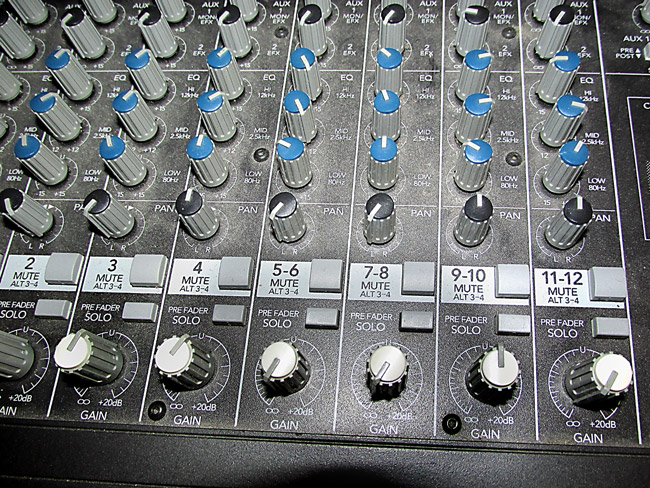RECORDING the Hammond Organ
North Suburban HAMMOND ORGAN Service
The mixer is a very important device in the equipment array for successful recording. Modern digital multi-track recorders also comprise a mixer, although most of the tape machines did not. But there are also specific instances where we might use a separate mixer as well.
The mixer contains multiple, single channel or track amplifiers. Each can accept a wide variety of different inputs, and each by itself is mono. The mixer typically includes separate bass and treble controls as well as a third midrange control to adjust its final output. Each channel on the mixer also has an effect send control to send an adjustable amount of its signal to a separate DSP. Likewise, a panning control for each channel of the mixer determines where in the final stereo mix that channel’s signal should go. Some mixers also contain an on-board DSP, and also have the capability of accepting one or more separate DSPs. The mixer’s output is a standard two-channel stereo signal which gets recorded for ultimate distribution.
We may actually say that in many ways, a mixer is a multi-track recorder without the capability of recording anything. If, for example, you are using a two-track recorder, or a multi-track recorder that can only record two channels at one time, such as the machine shown on page four, figure seven, then the individual instrument channels and microphone inputs would be combined first in the mixer and then recorded. This is a very viable method which can secure excellent results. The principle difference between using this method and using a multi-track recorder using more than 2 tracks is that you will have to do more experimenting before making the final recording. You’ll have to try different mixer settings, record just a little, maybe about 30 seconds’ worth of material, then listen to it. If not satisfactory, you will have to tweak the mixer controls again and then record, and subsequently listen, doing this until the final recording sounds the way you wish it to sound.
When using a true multi-track machine, you record once, then tweak as much as you like after until you are pleased with the final result, which you then record as the mixdown.
Mixers can also be used with multi-track machines if you are recording on more tracks than the multi-tracker can handle at one time. Here, you can mix several individual microphone or instrument inputs ahead of time, and then record that submix as one or two tracks on the mutli-tracker. The possibilities are infinite and really depend on what you are recording, what equipment is available for the recording job, and what you want for a final result.

Figure 10. General look at the controls on a mixer. At the bottom are the volume controls, above which are solo and muting controls, and above these you find the panning controls. In this picture, tracks or channels 2, 3, and 4 are in use, everything on two is being sent to the right channel of the mix, everything on track three is going to the left, and track four is evenly divided or centered on both the right and the left channels. Track nine-ten, which is designed to accept a stereo input is also in use, both channels are evenly distributed. In this particular setup, this mixer is being used with an X66 Hammond and a keyboard. The three main channels of the X66 are on tracks 2, 3, and 4, and tracks 9 and 10 are being used for the keyboard, which outputs its signal as a stereo signal. Track one is a microphone for the singer.
A mixer can also be used in a live session where there is no intent to record at all, in which case it allows convenient control of a number of different signal sources. It is worth stressing in this article that the whole article is a series of suggestions or guidelines, but not an absolute rule. Much depends on how serious you are about the final result, and if you are making a recording just for your own casual enjoyment, or if you are making a CD for possible commercial distribution. We're slanting this article to the latter, where we are using extra equipment and extra steps to achieve the best possible results.
The next thing that we'll consider is what can we do with these individual tracks in the multi-track recorder, or what after-the-fact enhancements can we employ to make the final recording on the distribution CD as good as possible, sometimes even exceding the quality of the live performance.
Back to Page 5. Page 6. Go to Page 7.